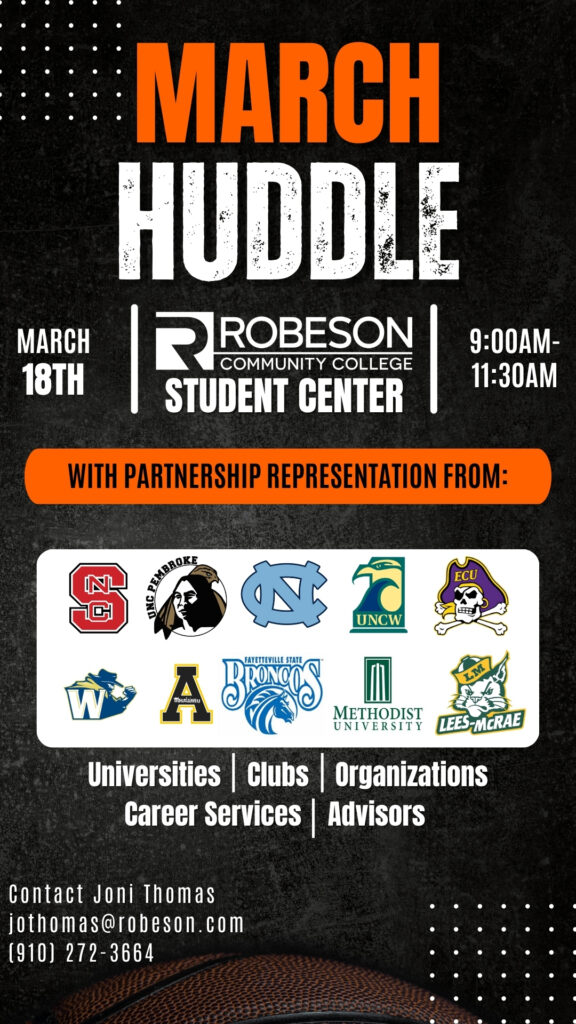Definitions
- Bystander- is anyone who observes an incident yet does not get involved.
- Confidential Employees are employees who hold a professional license requiring confidentiality such as Mental Health Counselors, Pastoral Counselors, Social Workers, Psychologists, and/or Health Center employees. Confidential employees are NOT required by Title IX to report ANY information to the Title IX Coordinator or designee unless the information presented poses a significant threat to the safety and security of an individual(s), school property, or the campus community.
- Complainant- The person complaining of sexual misconduct or interpersonal violence is called the “complainant” or “reporting party” or “victim” and those terms may be used interchangeably.
- Consent-Communication of mutually understandable words or actions, freely, actively, and affirmatively given that indicate a willingness to participate in mutually agreed upon sexual activities or actions. Consent is mutually understandable when a reasonable person would consider the words or actions of the parties involved to do the same thing, in the same way, at the same time. Consent cannot be given if the individual has a reasonable fear he or she will be injured if the individual does not give consent, is underage, is incapable of giving consent or is prevented from resisting due to physical or mental incapacity, which may include but is not limited to the influence of drugs or alcohol, or if the individual has a mental or physical disability that would prohibit their ability to provide consent. In the absence of mutually understandable words or actions, it is the responsibility of the initiator of the sexual activity to make sure they have consent from their partner. Consent can also be withdrawn at any time.
What Constitutes Lack of Consent?
Consent cannot be inferred through silence or lack of resistance. Consent to one activity does not constitute consent to other sexual acts. Past sexual activity does not constitute consent for future acts. A minor cannot provide consent under any circumstances. If at any time consent is uncertain, the initiating party should stop and obtain verbal consent. The use of any force, display of force, coercion, or intimidation typically negates consent.
Individuals who are incapacitated may not legally give consent to sexual activity. Incapacitation includes, but is not limited to, being highly intoxicated, passed out, or asleep. A person who is incapacitated for purposes of this policy is one who is not legally able to give consent because they are mentally or physically helpless. Mentally helpless is when a person has a mental illness or a condition (like being passed out, asleep, or highly impaired) that renders them incapable of understanding the nature of their conduct. Physically helpless means a person has restriction of movement, either temporarily or permanently.
When incapacitation occurs due to alcohol or drug use, indicators of incapacitation may include the following:
Slurred speech
Bloodshot or unfocused eyes
Unsteady gait; needing assistance to walk/stand
Vomiting
Outrageous or unusual behavior
Concern expressed by others about the individual
Expressed memory loss or disorientation
An individual may also be in a state known as a “blackout” where they are incapacitated and will likely have no memory of the sexual activity, but are up, and walking and talking. Therefore, it is of particular importance that any people engaging in sexual activity know the other person’s level of intoxication prior to beginning sexual contact. For purposes of the University/College’s policy, the standard that shall be applied is whether or not a reasonable person would have known, based on the facts and circumstances presented at the time of the alleged conduct, that the other party was incapacitated and therefore, not capable legally of consenting. For the accused party, being under the influence of alcohol or drugs is never a defense to this policy and does not excuse sexual misconduct.
Examples of Sexual Assault or Non-Consensual Sexual Intercourse:
Having sex with an unconscious or semi-conscious person.
Having sex with someone who is asleep or passed out.
Having sex with someone who has said “no.”
Allowing another person to have sex with your partner without his or her consent.
Having sex with a person who is vomiting, unable to stand without assistance, or has had to be carried to bed by a partner.
Telling someone you will “out” them if they don’t engage in sex (disclose their sexual orientation without their consent).
Telling someone you will fail them or give them a grade different from what they deserve if they don’t agree to have some form of sexual contact.
Telling a subordinate that you will grade them differently on an evaluation, deny them an employment opportunity (like training, a promotion, etc.), deny leave, or impact their employment in some other negative way of they do not agree to have some form of sexual contact.
Having sex with someone whose agreement is obtained through threat, blackmail, or some other form of coercion.
- Dating Violence – means violence committed by a person who is or has been in a social relationship of a romantic or intimate nature with the victim. Dating violence includes the use or threat of physical force or restraint carried out with the intent of controlling the victim’s behavior or causing pain or injury.
Examples of Dating Violence:
Hitting, punching, pinching, slapping, or choking
Threats of physical harm
Taking away a person’s cell phone during an argument so the person cannot call a friend or the police for help.
- Domestic Violence -includes felony or misdemeanor crimes of violence committed by a current or former spouse of the victim, by a person with whom the victim shares a child in common, by a person cohabitating with or who has cohabitated with the victim as a spouse, or by any other person against an adult or youth victim who is protected from that person’s acts under the domestic or family violence laws of the jurisdiction.
Examples of Domestic Violence:
Hitting, punching, pinching, slapping, or choking
Violating a protective order.
Harming the victim’s animals or children
- Gender Identity Harassment – behavior that targets someone for offensive, hostile, degrading or insulting treatment because of their gender.
- Hostile Environment – conduct evaluated from the perspective of a reasonable person in the alleged victim’s position considering all the circumstances. The more severe the conduct, the less need there is to show a repetitive series of incidents (particularly if the conduct is physical). A single or isolated incident of sexual violence may create a hostile environment.
- Preponderance of the Evidence Standard– the standard used to adjudicate sexual misconduct cases-the proof need only show that the facts are more likely to be than not so.
- Respondent-The person alleged to have engaged in sexual misconduct or interpersonal violence is called the “respondent” or “accused party” and those terms may be used interchangeably.
- Responsible Employees are employees that has been given the duty of reporting incidents of sexual harassment/misconduct or any other misconduct by students/employees to the Title IX Coordinator or other appropriate designee.
- Sexual Assault -is any intentional sexual touching, directly, or over clothing, however slight, with any body part or object,without explicit consent. It is also considered sexual assault if the individual is forced to touch the intimate parts of another individual.
Sexual touching includes:
Intentional contact with the breasts, buttocks, groin, or genitals, or touching another with any of these body parts, or making another touch you or themselves with or on any of these body parts; any intentional bodily contact in a sexual manner, though not involving contact with/of/by breasts, buttocks, groin, genitals, mouth or other orifice.
Sexual assault includes non-consensual sexual intercourse.
Non-Consensual Sexual Intercourse (Rape) is any sexual penetration, however slight, with any body part or object, by one person upon another, without consent and/or by force.
Non-consensual sexual intercourse is defined as sexual penetration (anal, oral, or vaginal) of the individual by any part of another individual’s body or other object, without explicit consent. It is also considered non-consensual sexual intercourse if the victim has a reasonable fear that the individual or another will be injured if the individual does not give consent, is incapable of giving consent or is prevented from resisting due to physical or mental incapacity, which may include but is not limited to the influence of drugs or alcohol, or if the individual has a mental or physical disability that would prohibit their ability to provide consent.
-
Sexual Exploitation-Sexual exploitation occurs when a person takes advantage of another without that individual’s consent for the initiator’s own advantage or benefit or to benefit or advantage anyone other than the one being exploited, and that behavior does not otherwise constitute one of the other sexual misconduct offenses.
Examples of Sexual Exploitation:
Prostituting another.
Allowing a third party to watch consensual sexual contact without the permission of both parties involved in the sex act or showing voluntarily recorded sexual activity to others without permission.
Allowing others to have sex with an incapacitated person.
Taking or disseminating explicit photos, videos, or audio recordings of someone without their consent.
- Sexual Harassment – is unwelcome, gender-based verbal, non-verbal, or physical conduct that is, sufficiently severe, persistent or pervasive that it, unreasonably interferes with, denies or limits someone’s ability to participate in or benefit from our educational programs and/or activities or privileges of employment, and is, based on the creation of a hostile environment, quid pro quo harassment, or retaliation.
A hostile environment is any situation in which there is harassing conduct that is sufficiently severe, pervasive and objectively offensive. The determination of whether an environment is “hostile” must be based on all of the circumstances. These circumstances could include but are not limited to:
The frequency of the conduct;
The nature and severity of the conduct;
Whether the conduct was physically threatening;
Whether the conduct was humiliating;
The effect of the conduct on the alleged victim’s mental or emotional state;
Whether power differentials exist between the parties;
Whether the conduct was directed at more than one person.
Not all workplace or educational conduct that may be described as “harassment” affects the terms, conditions or privileges of employment or education.
Quid Pro Quo Harassment is unwelcome sexual advances, requests for sexual favors, and other verbal or physical conduct or communications, when submission to this conduct is explicitly or implicitly made a term or condition of an individual’s employment or academic success; or submission to or rejection of this conduct is used as the basis for an employment or academic decision; and/or power differentials exists that impact a person’s ability to reject such advances.
Examples of Harassment:
A professor offers that a student can have sex with him/her in exchange for a good grade. This is harassment regardless of whether the student agrees to the request.
A student repeatedly sends sexually-oriented jokes around on an email list, even when asked to stop, causing one recipient to avoid the sender on campus and in the residence hall where they both live.
Explicit sexual pictures are displayed in a professor’s office, on the exterior of a residence hall door or on a computer monitor in a public space.
Two supervisors frequently ‘rate’ several employees’ bodies and sex appeal, commenting suggestively about their clothing and appearance.
A professor engages students in discussions in class about their past sexual experiences, yet the conversation is not in any way germane to the subject matter of the class. She probes for explicit details, and demands that students answer her, though they are clearly uncomfortable and hesitant.
An ex-girlfriend widely spreads false stories about her sex life with her former boyfriend to the clear discomfort of the boyfriend, turning him into a social outcast on campus.
-
Sexual misconduct- is a broad term used by the University/College to identify a number of forms of discrimination based on sex. Sexual misconduct includes sexual harassment, sexual assault, and sexual exploitation. This policy also prohibits sex-based harassment, which may include dating violence, domestic violence, and stalking or other acts of verbal, nonverbal, or physical aggression, intimidation, or hostility based on sex or sex-stereotyping, even if those acts do not involve conduct of a sexual nature.
Sexual Misconduct offenses include, but are not limited to:
Sexual Harassment
Sexual Assault
Non-Consensual Sexual Intercourse
Sexual Exploitation
Dating Violence
Domestic Violence
Stalking
- Sexual Violence – physical acts perpetrated against a person’s will or where a person is incapable of giving consent (e.g., due to the student’s age or use of drugs or alcohol or because an intellectual or other disability prevents the student from having the capacity to give consent).
- Stalking – means engaging in a course of conduct directed at a specific person that would cause a reasonable person to (a) fear for his or her safety or the safety of others or (b) suffer substantial emotional distress.
Examples of Stalking:
Repeatedly communicating or attempting to communicate with a person who doesn’t wish to be communicated with.
Persistently following a person or lying in wait for them.
Sending unwanted gifts.
- Title IX Coordinator: The designated person(s) responsible for oversight of the College’s response to Title IX reports and complaints.
- Witnesses: Individuals present on occasion of alleged incident, familiar with relationship (or lack thereof), interacted with complainant and respondent prior to and following incident.












